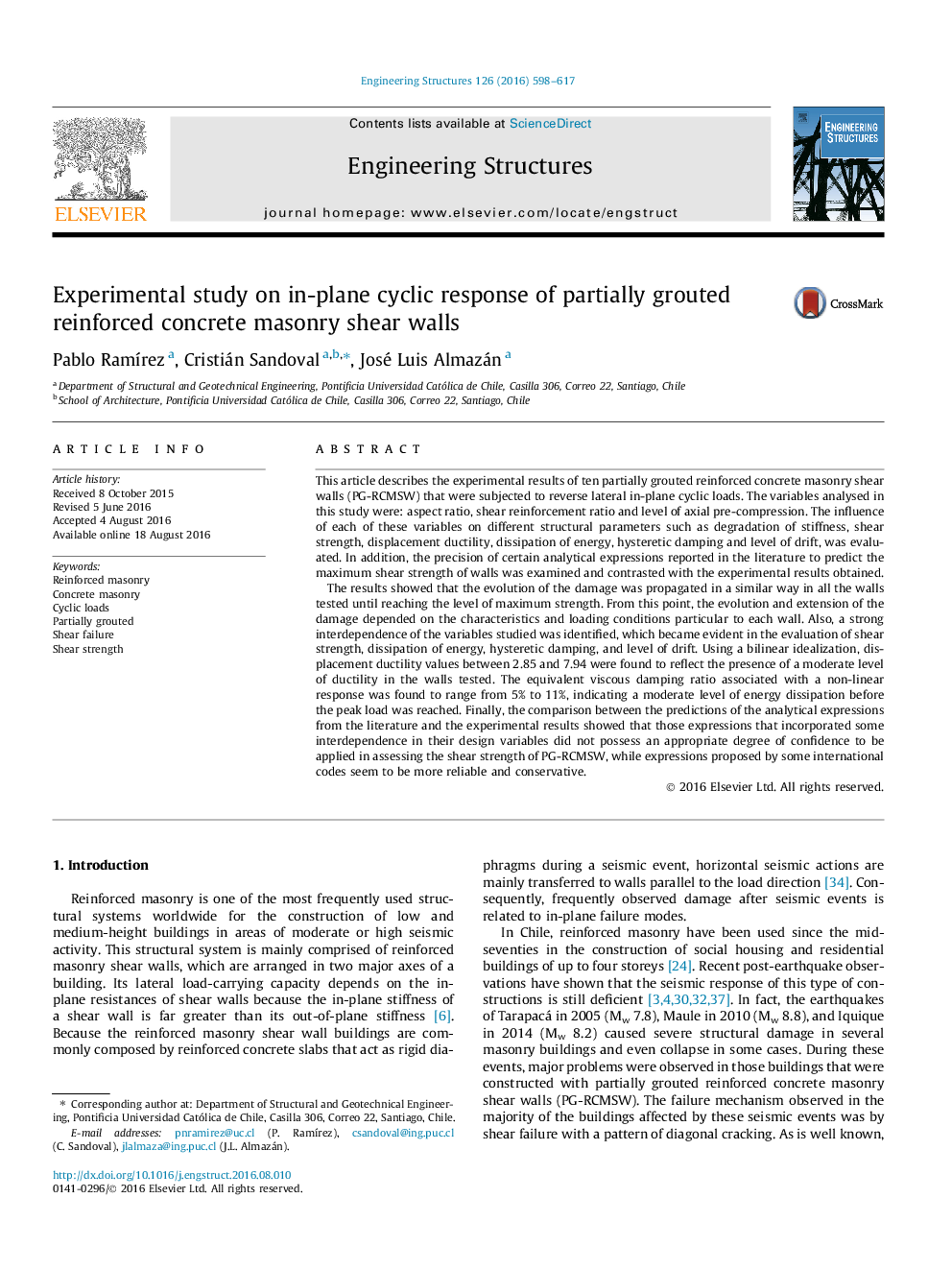| Article ID | Journal | Published Year | Pages | File Type |
|---|---|---|---|---|
| 4920791 | Engineering Structures | 2016 | 20 Pages |
Abstract
The results showed that the evolution of the damage was propagated in a similar way in all the walls tested until reaching the level of maximum strength. From this point, the evolution and extension of the damage depended on the characteristics and loading conditions particular to each wall. Also, a strong interdependence of the variables studied was identified, which became evident in the evaluation of shear strength, dissipation of energy, hysteretic damping, and level of drift. Using a bilinear idealization, displacement ductility values between 2.85 and 7.94 were found to reflect the presence of a moderate level of ductility in the walls tested. The equivalent viscous damping ratio associated with a non-linear response was found to range from 5% to 11%, indicating a moderate level of energy dissipation before the peak load was reached. Finally, the comparison between the predictions of the analytical expressions from the literature and the experimental results showed that those expressions that incorporated some interdependence in their design variables did not possess an appropriate degree of confidence to be applied in assessing the shear strength of PG-RCMSW, while expressions proposed by some international codes seem to be more reliable and conservative.
Related Topics
Physical Sciences and Engineering
Earth and Planetary Sciences
Geotechnical Engineering and Engineering Geology
Authors
Pablo RamÃrez, Cristián Sandoval, José Luis Almazán,
